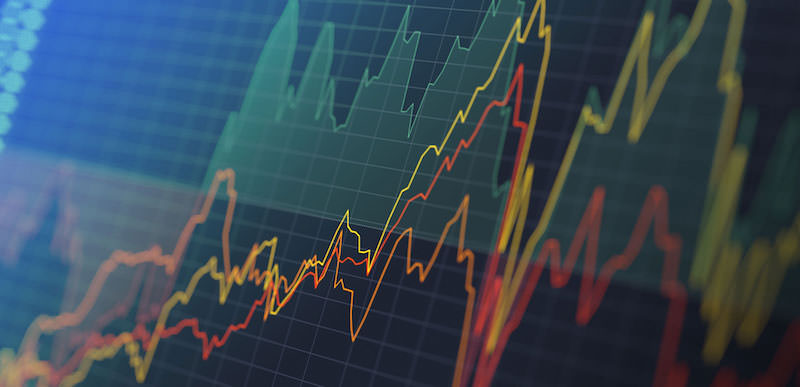Understanding and analyzing the economic cycle is crucial for traders and investors seeking to maximize their returns and minimize risks. In this guide, we will provide a clear definition of the economic cycle, demonstrate the importance of its analysis in trading, and explain how to effectively conduct this analysis.
Defining the Economic Cycle
The economic cycle is the set of fluctuations in a country's or economic area's economic activity over time.
These fluctuations manifest through variations in Gross Domestic Product, unemployment, interest rates, industrial production, and other economic indicators. Typically, an economic cycle develops in four main phases:
- Expansion. During this phase, the economy grows above its potential. There is an increase in production, consumption, and investments. Additionally, unemployment decreases.
- Peak. This phase marks the point of maximum expansion of economic activity, after which growth slows down.
- Recession. It is characterized by a decrease in economic activity. GDP contracts, unemployment rises, and consumer spending reduces.
- Depression. This is the lowest point of the cycle, from which the economy gradually begins to recover.
In addition to traditional cycles, there are also short-term cycles (Kitchin cycles, lasting about 40 months) and long-term cycles (Kondratiev cycles, lasting from 45 to 60 years), which can overlap with general economic cycles.
When Economic Cycle Analysis is Necessary
Economic cycle analysis is particularly relevant in various areas of trading. Long-term traders, for example, rely on this analysis to identify phases of recession or expansion and adjust their investment strategies accordingly.
The reason is simple: economic growth drives assets. At the same time, so does recession. After all, no investment product can be considered independent of the context.
Obviously, there are differences between various types of trading. Here are those most susceptible to the economic cycle and, consequently, benefit from an accurate analysis of it.
- Stock trading. Investors can use economic cycle analysis to predict stock market movements and choose the best time to buy or sell stocks. Among the most susceptible indicators of the cycle are industrial production and services, which in turn impact the "destinies" of stock prices, which are a direct emanation of companies.
- Commodity trading. During phases of economic expansion, the demand for commodities tends to increase, which can lead to a rise in prices. Obviously, the opposite occurs during recessive phases.
- Forex trading. The phases of the economic cycle influence exchange rates. For example, a phase of strong growth can lead to an appreciation of the national currency. This happens for technical reasons, often related to import-export, but more simply because each currency is an expression of the strength of the reference economy.
How to Conduct Economic Cycle Analysis
Economic cycle analysis in the context of trading requires a systematic approach and the use of various tools and methods.
Economic indicators. The first step involves analyzing key economic indicators such as GDP, unemployment rates, inflation levels, and interest rates. This data can be obtained from government sources or independent research institutes.
Trend analysis. Use statistical methods to identify trends over time. Time series analysis can help understand when the economy is approaching a peak or recession.
Econometric models. Employ econometric models to forecast future phases of the economic cycle. These models can include multiple variables and offer more accurate projections.
Market sentiment. Equally important is the analysis of market sentiment, which can provide clues about possible future price movements based on the perceptions and expectations of economic operators.
The Right Mindset for Practicing Economic Cycle Analysis
Adopting the right mental approach is essential for anyone who wants to use economic cycle analysis as an effective trading tool. First and foremost, it is crucial to develop an
open and flexible mindset. Financial markets are inherently volatile and full of uncertainties, so it is vital to be ready to modify strategies based on changes in economic cycles. This is particularly useful during recessive phases. The "open" trader, in that moment, knows that an expansionary phase will follow and does not get discouraged.
Secondly, patience is a virtue not to be overlooked in this field. Economic cycles can extend for months or years, and signals of a phase change can be gradual and not immediately evident. Traders must therefore be patient and wait for
data to confirm their hypotheses before acting.
Moreover, a data-driven approach is vital. Emotion and intuition can play a role in trading, but decisions should always be supported by solid quantitative analysis and a rigorous evaluation of economic indicators.
Finally, constant updating is necessary. The economic environment is constantly changing; therefore, keeping one's knowledge up to date and deepening the understanding of the economic cycle is fundamental to remaining competitive in trading, especially in the long term.




